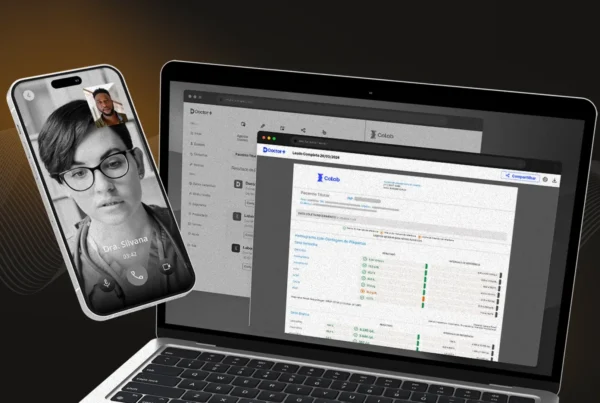For many years, educational institutions have been resistant to the use of technology. Traditional methods have been ingrained in our culture to reject any new options that come along the way.
However, with the constant change in the world, technology has become an indispensable part of our daily lives. Not only for the practicality and ease that technology offers us but also for the doors that open from this knowledge.
The use of technology in the classroom is fundamental for the development of more dynamic and promising learning. In this article, you will understand the reasons why technological education is so important for children and young people. Check out!
How can technology be efficient in teaching?
Although the development of more effective learning through technology has not been proven, technology has certainly revolutionized the way we learn and teach. By supporting teachers in teaching, digital media had a positive impact on the learning process.
In addition, the Digital Transformation applied in education has improved collaboration and communication between students and teachers, and, with the imposition of social distancing caused by the pandemic, it become to be essential. Digital tools such as videoconferencing applications, discussion forums, and document sharing environments in the cloud have allowed many schools to continue their activities.
What are the impacts of technology on education?
Some of the key impacts of technology on education include:
- Greater access to educational resources such as online textbooks, videos, podcasts, and e-learning platforms.
- Create innovative teaching methods that meet the diverse learning needs of students. For example, interactive whiteboards, multimedia presentations, and educational games can help make complex concepts more accessible and engaging for students.
- Online vocational training programs, job search engines, and entrepreneurship resources can help students gain the skills and knowledge they need to enter the workforce and develop their professional careers.
With technology, it is possible to build a more equitable and inclusive society, where all students have the chance to reach their potential. However, the path to reaching this goal is full of obstacles.
How can technology help underprivileged children?
The country’s social inequality does not allow everyone to have access to digital devices and the internet. Therefore, while many young people are familiar with technology since childhood, others have never had direct contact with a device connected to the network.
When there is access to technology, its impact on transforming people’s lives is immense. Learning is enhanced with digital resources, new teaching methods, and new opportunities for educational training emerge.
One of the key benefits of technology in education is its ability to bridge the digital divide. In poor communities, access to quality education is limited. However, several organizations from the third sector, and the private sector invest in education through initiatives such as professional training aimed at low-income people.
It is the case of the Entry Point BRQ training program, which has already trained more than 900 students from vulnerable communities.
By bridging the digital divide and empowering young people with knowledge and skills, technology is helping to build a more equitable and inclusive society.
What are the benefits of technology in education?
The benefits generated by technology in education are innumerable. Not just for the practicality of use, but for everything that applications, websites and electronic devices can offer. We separate good reasons to include technology in education, check it out!
Interactive classes
The dynamism that a technological class can provide is projected much easier given a traditional class. By using technology in education, we show students a new world. Everything works quickly and is simpler.
Sharing ideas, encouraging research, and exchanging knowledge are points to be observed in technological classes. Interest in the new must be harnessed and utilized most effectively and productively possible.
Hybrid teaching
The immersion of technology in education became even bigger during the pandemic, when schools, colleges and other institutions were closed, and the only viable option to continue the school year was remote teaching. Today, we see that this modality has extended beyond the social distancing of 2020 and 2021.
Many institutions have adopted hybrid teaching as a learning method, some classes are in person, and others are virtual. It enables an even greater frequency in teaching: if the teacher is unable to be in the classroom in person, he has the option of assigning an assignment to be done at home or teaching the class through an online platform.
Digital literacy
One of the benefits of investing in highly technological educational businesses can be seen in digital literacy, in which students gain knowledge about digital platforms and learn how to use them in favor of their learning. Digital literacy is defined as the mastery and ability of students to handle technological means.
In addition, contact with the internet allows an exchange of knowledge and an access to information.. It is the teacher’s job to guide each student in the most effective way to use the network as a builder of knowledge.
Professional qualification
Many professions are focused on the internet and digital media. The first contact of many students with the network — especially needy young people — can be in the classroom, awakening interest in the job market in the area.
What are the gains for companies and society?
Companies need employees who know what to do when they are in contact with a computer, tablet, or cell phone. Although there are non-technology-oriented activities, it is increasingly rare to find a job that does not require minimal knowledge of the internet, since our daily lives are based on digital media and electronic devices.
With the presence of technology in education, many young people enter the job market better prepared. Having technological knowledge is no longer a differential in the curriculum, but a must.
Education is responsible for opening doors and showing a new future to children and young people across the country. The internet can facilitate this access to the new, as well as encourage the search for knowledge and interactivity.
Technology in education is necessary not only for its practicality, but for everything it can offer on the path between school and the job market. Thus, it guarantees access to more opportunities and possibilities for growth.
Want to stay on top of more content like this? Check out our articles!





